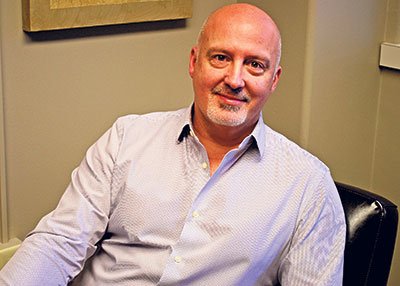The power of early intervention in psychosis and schizophrenia
Young people with psychosis and schizophrenia have greatly improved long-term outcomes when their illness is identified and treated as early as possible. istock.com
Researchers and mental-health service providers continue to build evidence and refine practices to give individuals with psychosis and schizophrenia the best opportunities to achieve “functional recovery.”
Early intervention is the core principle driving progress in this mental health field, says Dr. Phil Tibbo, the director of Early Psychosis Intervention Nova Scotia and president of the Canadian Consortium for Early Intervention in Psychosis (CCEIP). He is also the Dr. Paul Janssen Chair in Psychotic Disorders at Dalhousie University in Halifax.
Although the onset of a psychotic disorder such as schizophrenia can occur earlier or later, the average age of onset for most individuals is in their early twenties.
“Identifying and beginning to treat psychosis as early as possible is critical,” Dr. Tibbo says. “Not only to get control of the symptoms, but to maximize the young person’s long-term outcomes at a very significant developmental stage of their life.”
This is the age at which young people are making the transition to independence – moving away from home, attending university or college, launching early careers and starting families. “Failure to provide treatment can harm their development and functioning as they move into full adulthood. If we treat the person early, we can help them return to their educational and vocational pursuits, as well as their social circles and relationships.”
Psychotic symptoms include hallucinations, delusions, disordered thinking and unusual speech or behaviour. They may indicate the person has schizophrenia; however, other mental health disorders, physical illnesses and substance abuse can also cause psychosis. Early intervention also helps professionals make the right diagnosis in time to provide the right treatment.
Knowledge is expanding about how to detect possible psychosis in the early stages and about the best mix of treatments and supports that will most benefit which individuals.
“In our clinic here in Nova Scotia, around 50 per cent our referrals come from the community, which is a sign of progress. Several years ago, most referrals came from in-patient wards or emergency rooms. If they are coming to us after hospitalization, we are already playing catch up. ”
New approaches to support early detection
One key is to help other professionals, as well as the general public, learn more about indicators of a potential psychosis.
“We invest in educating our community stakeholders, including family physicians, school health centres and others that interact with young adults, so they can recognize the signs that something’s not quite right and seek help,” Dr. Tibbo explains.
“In our clinic here in Nova Scotia, around 50 per cent our referrals come from the community, which is a sign of progress. Several years ago, most referrals came from in-patient wards or emergency rooms. If they are coming to us after hospitalization, we are already playing catch up.”
Dr. Tibbo says innovative research is creating other ways to support early identification, such as brain imaging and linguistic assessments, looking at speech styles or patterns indicating a problem.
Expansion of services and advances in treatment
“A positive trend is that we continue to add more early intervention programs across Canada, including in rural and remote locations,” says Dr. Tibbo.
“And our treatment options continue to improve. The cornerstone of treatment is pharmacological, and we have more effective medications with fewer side-effects. At the same time, we have increasingly strengthened delivery of truly integrated care.”
Integrated care involves what Dr. Tibbo calls a “chest of diverse tools” – occupational therapy, social work services, peer support and different models of psychotherapy, such as cognitive behavioural therapy for psychosis. “Every individual has unique needs, and as the options expand, so do the prospects for preventing relapses and setting a foundation for recovery,” he says.
To view this report on The Globe's website, visit globeandmail.com
To view the full report as it appeared in The Globe's print edition: Mental health


